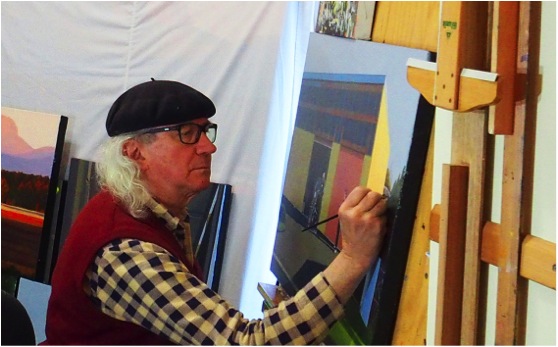David Lake Painter - Longford, Tasmania, Australia
Can you explain how you use colour to capture the time of day in your work?
Work is often initiated and inspired by some reflection or catch light; when painting this is emphasised. The vibrant colours of some objects seen are inviting as well. The use of high quality primary colours seems to give a brilliance.
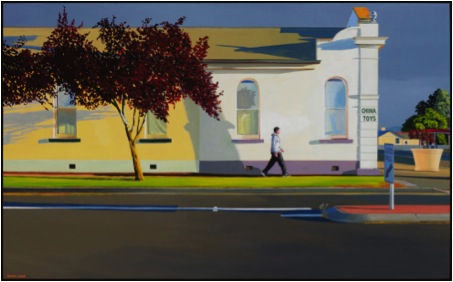
‘High on Summer Morning’
Discuss the importance of light and sky in your work?
Light is of great importance; it brings the picture to life. As to sky: it can so often take over. Sometimes I minimise the area of sky within the picture, other times the sky is given weight to contrast with surrounding objects.
You paint things that interest you, your work is not what you know will sell. Can you explain the importance of this in the growth of your art?
Given the advice separately by two well established artists some years ago to ‘paint what you like’, one has discovered the clear direction this has offered, both as to choice of subject and towards refinement in execution. The advice continually grows in significance; it is returned to and referred to often.
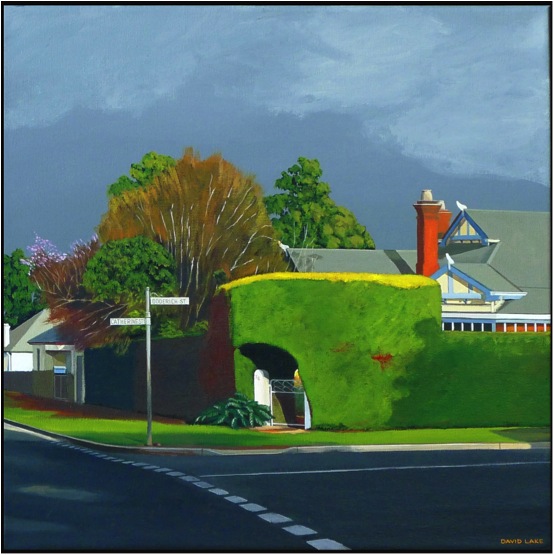
‘Sunday Morning’
All artists have high and low moments. Can you explain how both have influenced your work and your career?
Dissatisfaction with work is common and indeed a friend; there is a continual striving to improve, to reproduce the mindful vision, the vision becoming more apparent as the picture evolves. Such is useful, it drives the ‘learning to see’ process. I allow the ‘highs’ to pass; there is always room for improvement.
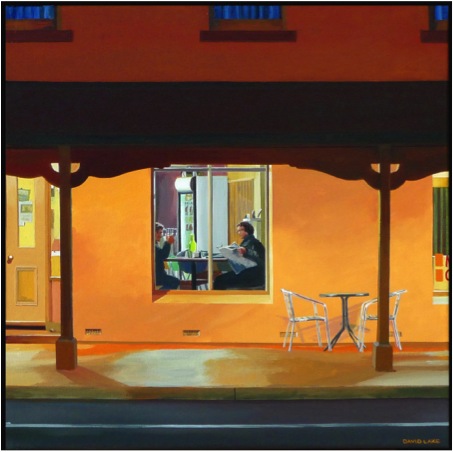
‘Friday Night’
Discuss some of your recent Awards and the value they have given to your artistic career?
Recognition is always a lift. Income from painting sales is useful; I do like to eat!! However, there is a deeper satisfaction that comes from the recognition of beauty in any work. The beauty is not mine, nor can it be owned or attributed to anyone in particular. I believe that beauty exists to uplift; an important organism in a world so often adrift.
When I spoke to you earlier this week, you commented that you had an hours work to do on a painting and this was your priority. Can you explain the timeline you give to your art?
I work most days and often for very many hours, usually working on several paintings at once. Drying time is needed, as is the stepping back and review of a work in progress. Then there is the stretching of canvasses and making frames, all from home milled profiles. Time away from the easel is also enjoyed. I live with a delightful and most understanding wife! She is used to me stopping the car, reversing and leaping out with sketchbook and camera.
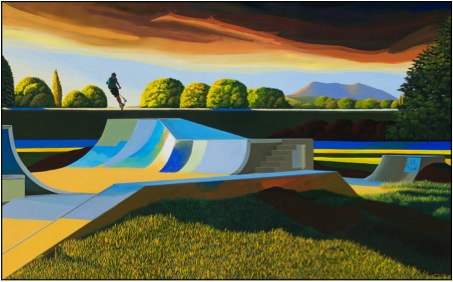
‘Air on an Autumn Evening’
What are you currently working on?
I have a solo exhibition opening at the beginning of October this year at Gallery Pejean, (who represent me) I am quite focussed on that. Much to be done and little time!
Size – can you discuss this in relationship to your work?
I really enjoy a size around 61 x 99 cms. It is a practical consideration, as I only have a very small area in which to paint at present. At the moment there are six canvasses around that size and then several up to 2.28 metres wide; it’s crowded. Larger canvasses are a joy however; bring a freedom which invites accuracy and an apparent presence.
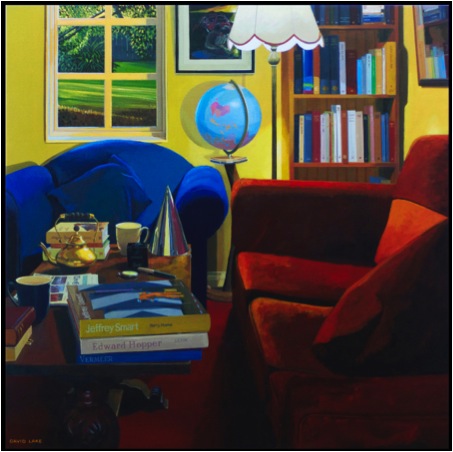
‘Window, Sphere, Party Hat and Friends’
You also work on portraits, can you take one that has given you great pleasure and discuss this technically?
Particular personalities are often included in landscape paintings. Often people who are seen by many, the folk who give colour to the community, even sometimes those on the margin of humdrum society. In the picture ‘1950 Hobart Road’, a particular well recognised woman is included; she walks almost incessantly around the city of Launceston, pausing in a café here and there for a cup of tea. I expressed interest in painting her to the proprietor of one of her regular tea stops and soon was to meet her in the café. With her permission I sat a few tables away and sketched her, twice. In her slow, deliberate voice she decreed ‘I like that one best, it has more life’; she was right! Having been an artist herself (did not know previously), there was a serendipitous aspect about it all. This is often the way pictures evolve. The composition is established early and remains, unless the picture is painted over. I always attempt to capture harmony in composition. This picture was entirely ‘constructed’: though the house exists with its 1950’s architecture things have been moved around, the car and the 1950’s van added, the bus stop made to be of the period, as is indeed, Merryl
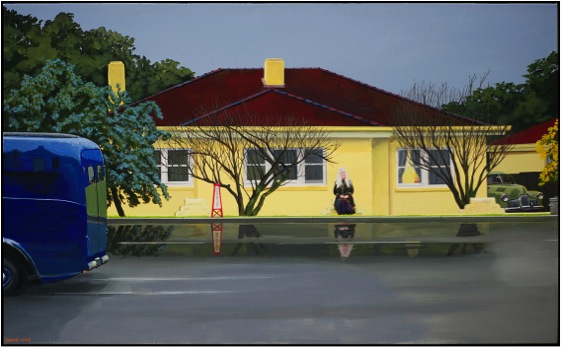
‘1950 Hobart Road’
Many of your recent works are from the perspective of the driver. Can you explain how and why you have used this?
Very simply, pictures arise from glimpses seen as one gets about, usually driving. My dear wife says I have a fondness for gutters and garbage cans; there is no dispute regarding this. The modest can be so full of beauty. Beyond the contrast of colour, I enjoy contrast of the made with the natural and bright colours are always a bonus!
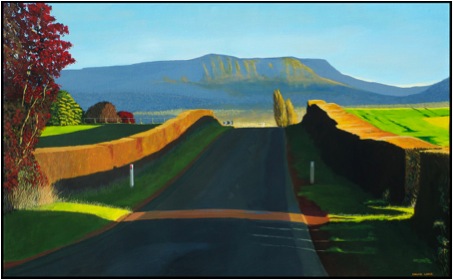
‘Autumn Lane’
You discuss the special moments, as “that glimpse” can you expand on this in your paintings?
It happens in a flash. Seen in a luxurious moment, the location is often sketched quickly and a snap taken. Usually return to the place ensues and often several times, just to look at aspects of light and possible composition. Pictures are usually constructed to suit composition and therefore could never be photographed.
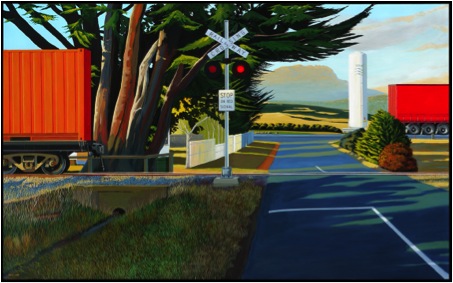
‘Degree of Permanence’
You do both Solo and Group exhibitions, can you expand on the benefits of both?
A Solo exhibition is demanding, as I am seldom satisfied with a work soon after it is ‘finished’. In this regard, as mentioned earlier, the experience drives improvement on several levels. In comparison, the group event even approaches fun! Both are good; best of all is the act of painting, I experience joy in the work.
Tasmania is your home, in many of your landscape paintings you give the viewer a new perspective to a known place. How important is this to you as an artist?
It doesn’t really matter where the place is, as beauty fortunately is not confined. Certainly ‘in the eye of the beholder’, the phenomenon is enjoyed without boundary. Those who seem to be drawn to my pictures are seeing them from within themselves. If they have happen to have worked hard all their lives, accumulated vast wealth and choose to spend it on one, or many of my modest efforts, then I will not argue their choice! The ‘perspective’ is a viewpoint which quietly arrives and inspires; however again, it’s not mine, it is there for all to see.
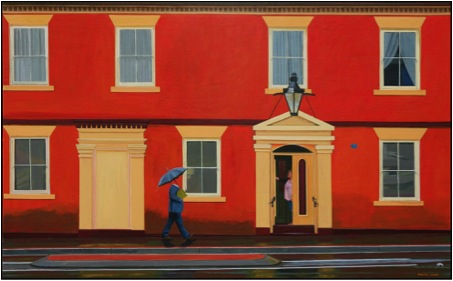
‘Earnestly Persuing Universal Knowledge’
You are a third generation Tasmanian. Do you think this connection to place has helped your insight?
Great Grandmother and Grandfather (I don’t recall them), Grandmother, and Grandfather (I found them really interesting) all lived in Tasmania. Father may have for a short while. I do prefer to live here in Tasmania out of all the possibilities in Australia, it is cooler and the sun has a low trajectory – these things suit me. I rather like miserable weather; indeed there are places where I would prefer to live that have far greater miserable weather. However I’m here and, it works.
Contact details.
Via website http://davidlakepaintings.com/
Gallery Pejean http://www.gallerypejean.com.au
David Lake, Longford, Tasmania, Australia
Interview by Deborah Blakeley, July 2014
Think a colleague or friend could benefit from this interview?
Knowledge is one of the biggest assets in any business. So why not forward this on to your friends and colleagues so they too can start taking advantage of the insightful information the artist has given?
Other artists you may be interested in:


